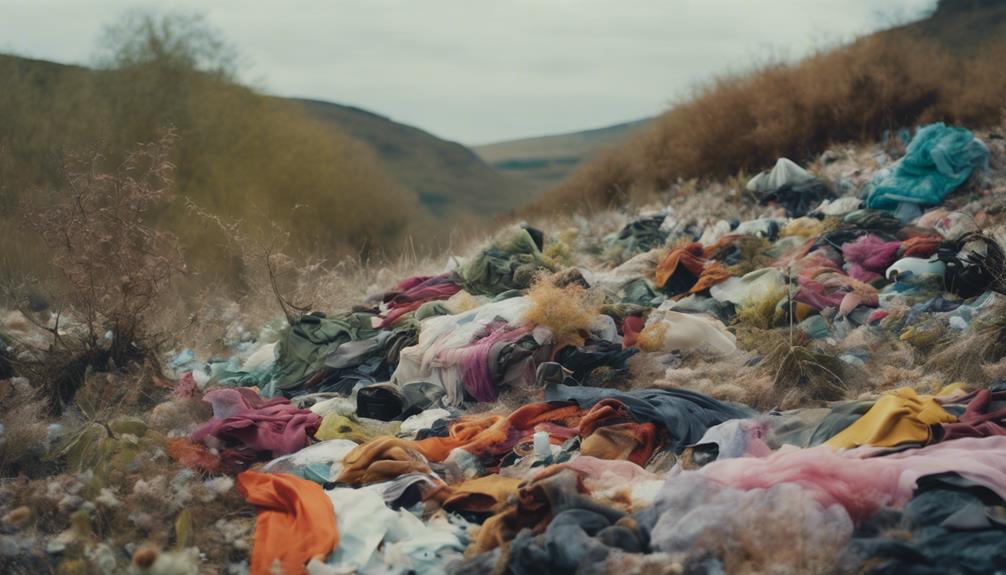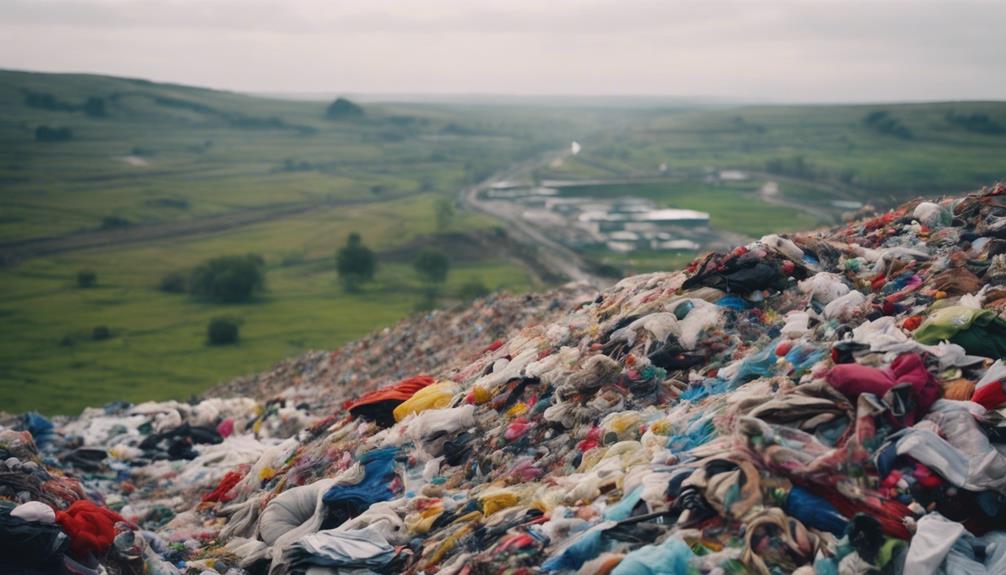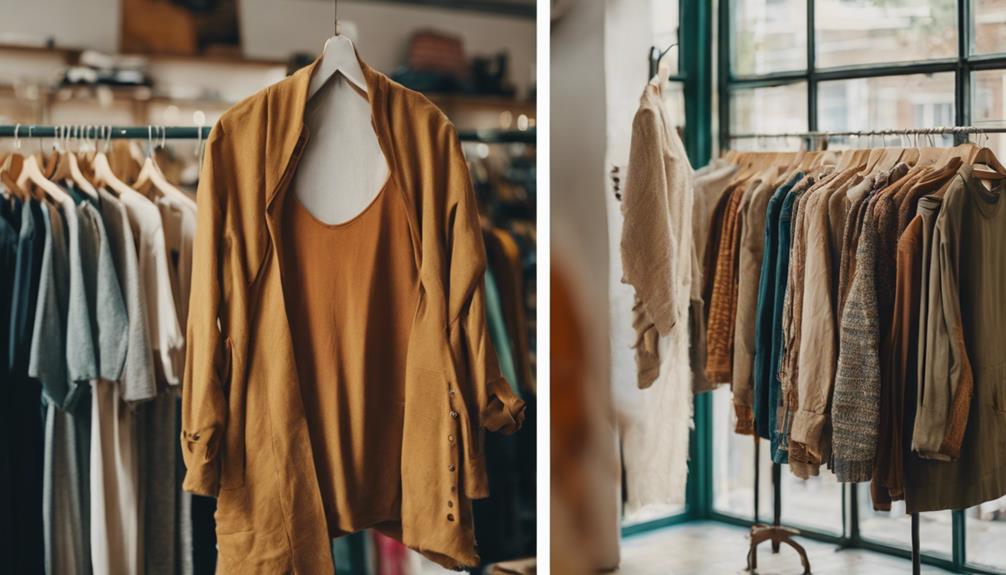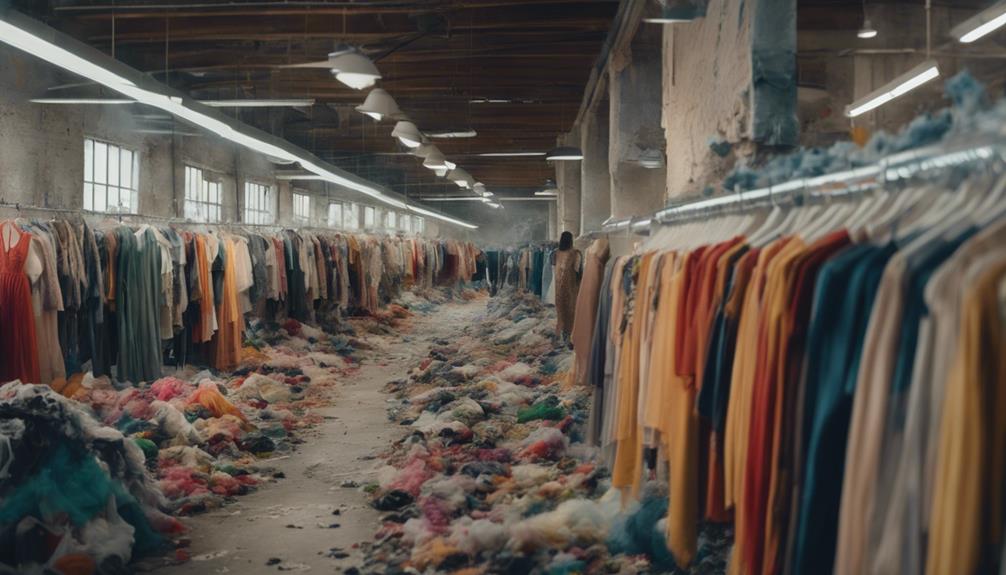Sustainable fashion involves making thoughtful decisions about your clothing that prioritize the well-being of our planet and support social responsibility. It challenges the harmful practices promoted by fast fashion, which contribute significantly to pollution and textile waste. By emphasizing sustainable materials, ethical labor practices, and a circular economy, you can minimize the environmental footprint of your wardrobe. It’s important to recognize that the fashion industry is a significant polluter, but your choices can have an impact. If you’re interested in incorporating sustainable practices into your lifestyle, there’s a lot more to learn.
Key Takeaways
- Sustainable fashion aims to reduce environmental impact and promote social responsibility within the clothing industry.
- It advocates for the use of eco-friendly materials and ethical labor practices throughout the supply chain.
- The fashion industry significantly contributes to pollution and waste, making sustainable practices essential for a healthier planet.
- Supporting sustainable fashion can transform consumer habits, reducing textile waste and promoting a circular economy.
Defining Sustainable Fashion
Sustainable fashion, often called eco-fashion, focuses on minimizing environmental impact and promoting social responsibility across every stage of the fashion process. When you think about sustainable fashion, consider how it emphasizes practices that reduce waste and resource consumption. This means supporting fair trade and ensuring ethical labor conditions for workers involved in the industry.
Sustainable fashion encourages the use of sustainable materials like organic cotton and recycled fabrics, which are pivotal in creating a less harmful production cycle. It also promotes the idea that clothing can be made to last, reducing the need for constant purchases that contribute to waste.
Moreover, sustainable fashion champions the circular economy, where 95% of discarded clothing can be recycled, and materials are repurposed rather than thrown away. By embracing these principles, you can make informed and responsible choices that positively impact both society and the environment.
Ultimately, sustainable fashion isn't just a trend; it's a movement toward a more ethical and environmentally friendly way of creating and consuming clothing. When you choose sustainable fashion, you're not only enhancing your wardrobe but also supporting a healthier planet.
Environmental Impact of Fashion

The fashion industry's practices have a profound environmental impact, making it the second-largest polluter globally. It contributes considerably to environmental degradation, only trailing oil production. When you think about your wardrobe, realize that textiles account for 5% of landfill space in the U.S. The average American discards over 80 pounds of clothing annually, resulting in a staggering 16 million tons of textile waste generated in 2017 alone.
You may not realize the resources involved in fashion production. Just producing one t-shirt requires over 700 gallons of water, highlighting how resource-intensive clothing manufacturing can be. This excessive water usage strains local ecosystems and communities.
Moreover, the environmental impact doesn't stop with production. Synthetic fabrics, often used in fast fashion, can take 30-40 years to decompose in landfills. This long-lasting environmental harm means that the consequences of today's fashion choices can affect the planet for generations to come.
Recognizing these facts can empower you to make more sustainable choices. By understanding the environmental impact of fashion, you can contribute to a more sustainable future.
Textile Waste and Its Consequences

As you consider your clothing choices, it's essential to recognize that textile waste poses a significant threat to our environment. Each year, the fashion industry generates over 16 million tons of textile waste in the U.S. alone. This staggering amount contributes to overflowing landfills and highlights the urgent need for change.
Fast fashion's convenience comes at a cost, as approximately 60% of apparel items are discarded within a year of purchase. Synthetic fabrics, often used in these garments, can take 30 to 40 years to decompose. With only 15% of textile waste being recycled, a vast majority ends up in landfills, further polluting our planet.
Consider the emotional weight of this issue:
- 16 million tons of waste choking our landfills
- 60% of clothing worn just once before being tossed
- 30-40 years for synthetic fabrics to decompose
- 80 pounds of clothing discarded per American yearly
These facts remind us that our choices matter. By being mindful of textile waste, we can embrace sustainable fashion and contribute to a healthier planet.
Water Consumption in the Industry

Fashion's water consumption is staggering, with producing a single t-shirt requiring over 700 gallons of water, a reality that highlights the industry's notable impact on our planet's essential resources. When you consider that one pound of cotton demands around 1,320 gallons of water to make, it's clear that cotton cultivation is particularly resource-intensive.
The processes involved in growing, manufacturing, and washing cotton are all water-intensive, contributing to a considerable amount of waste. In fact, the fashion industry ranks as the second-largest clean water polluter after agriculture. This pollution exacerbates the urgent need for sustainable practices that conserve crucial water resources.
You can help mitigate this problem by extending the lifecycle of your clothing. Simple practices like repair and upcycling can greatly reduce the overall water footprint associated with fashion consumption. By making conscious choices and prioritizing sustainable options, you can lessen the demand for water to make new garments and contribute to a healthier planet.
Carbon Footprint of Clothing

Understanding the carbon footprint of clothing reveals how much our choices impact the environment. Every time you purchase a garment, you're contributing to a significant amount of carbon emissions.
The fashion industry is a major player in climate change, and it's essential to be aware of the facts:
- Polyester production emits three times more CO2 than cotton.
- Fast fashion generates over 400% more emissions per item than sustainable garments.
- Clothing production contributes to approximately 1.5 tonnes of CO2 emissions per household annually.
- By 2050, unsustainable practices could consume over a quarter of the world's carbon budget.
Fast Fashion Vs. Slow Fashion

When you compare fast fashion and slow fashion, you'll notice a stark difference in environmental impact, consumption patterns, and labor ethics.
Fast fashion encourages a throwaway culture, while slow fashion promotes thoughtful choices that benefit both the planet and workers.
Environmental Impact Comparison
Fast fashion wreaks havoc on the environment, contributing considerably to greenhouse gas emissions and waste, while slow fashion promotes sustainability through quality and longevity. You mightn't realize the extent of the damage fast fashion causes, but understanding this can motivate you to choose sustainable brands instead.
Consider these alarming facts:
- Fast fashion accounts for 8% of global greenhouse gas emissions.
- An average of 60% of fast fashion items end up in landfills within a year.
- Producing one pair of jeans requires a staggering 7,500 liters of water in the fast fashion sector.
- Fast fashion generates over 400% more emissions per item than sustainable garments.
Consumption Patterns Shift
The shift from fast fashion to slow fashion reflects a growing awareness of how our consumption patterns impact the environment and society. Fast fashion promotes a disposable culture, with items typically worn less than five times before being discarded. This leads to staggering amounts of textile waste, as the average American throws away over 80 pounds of clothing each year, much of it from fast fashion brands.
In contrast, slow fashion emphasizes sustainable practices, focusing on quality and durability. By investing in clothing that lasts longer, you not only reduce overall consumption but also minimize your environmental footprint.
Sustainable practices in the slow fashion movement can greatly lower the environmental impact of the fashion industry. For instance, clothing production generates over 400% more emissions per item compared to sustainable garments.
By changing your purchasing habits towards slow fashion, you contribute to a more responsible approach to consumption. This change not only benefits the planet but also supports a fashion industry that values ethical production methods.
Ultimately, embracing slow fashion fosters a deeper connection with what you wear, encouraging mindful choices that reflect your values and commitment to sustainability.
Ethical Labor Practices
Emphasizing ethical labor practices reveals a stark contrast between the exploitative models of fast fashion and the fair, transparent approaches of slow fashion. When you choose to shop sustainably, you're not just making a fashion statement; you're also standing against a system built on the backs of the vulnerable.
Consider these harsh realities of fast fashion:
- Workers may earn as little as $3 a day, struggling to meet basic needs.
- Unsafe working conditions put lives at risk, with little to no protections.
- Gender inequality is rampant, as 85% of textile workers are underpaid women.
- Fast fashion fosters a disposable culture, undermining labor rights and dignity.
In contrast, slow fashion champions fair wages, safe environments, and ethical sourcing. By investing in quality garments, you not only empower workers but also contribute to a sustainable future.
When you opt for brands committed to ethical labor practices, you help create a world where fashion is a force for good. Shopping sustainably isn't just a trend; it's a movement toward responsibility and respect for those who make our clothes.
Importance of Sustainable Materials

Sustainable materials play a crucial role in reducing environmental harm and promoting a healthier planet for future generations. By choosing fabrics like organic cotton and hemp, you're minimizing pesticide use and supporting biodiversity in agriculture. This not only benefits the environment but also encourages sustainable farming practices.
When you opt for recycled materials in fashion, you help divert waste from landfills. It's staggering to think that nearly 95% of discarded clothing can be recycled or upcycled. Additionally, sustainable fabrics such as Tencel, made from sustainably sourced wood pulp, boast a lower carbon footprint and require considerably less water than conventional textiles.
Innovations in sustainable textiles, including bio-based materials, are vital. Traditional polyester production emits three times more CO2 than cotton, so switching to sustainable materials can make a notable impact. By choosing these fabrics, you support a circular economy, encouraging the reuse and recycling of resources and reducing the demand for virgin materials.
Essentially, your choices in sustainable materials can lead to a more sustainable fashion industry and a healthier planet for all.
Consumer Education and Awareness

Consumer education plays an essential role in shaping your purchasing decisions, as it empowers you to choose truly sustainable products over those that merely claim to be. When you understand the difference between genuine sustainability and greenwashing, you'll make informed choices that can have a real impact.
Consider these points:
- You can protect the environment by supporting brands that prioritize sustainability.
- Every purchase counts; your choices can drive demand for eco-friendly practices.
- Knowledge is power; the more you know, the better your decisions.
- You can inspire others by sharing what you learn about sustainable products.
With 92% of Indian adults willing to pay more for sustainable products, it's clear that awareness is growing.
By educating yourself about the environmental and social impacts of the fashion industry—like its contribution to 8% of global greenhouse gas emissions—you can adopt more sustainable shopping habits.
Your actions can foster a culture of sustainability that encourages more ethical choices in fashion.
Embrace your role as a conscious consumer!
Benefits of Secondhand Shopping

Secondhand shopping offers a practical way to reduce your environmental footprint while discovering unique fashion finds. By choosing to buy pre-loved clothing, you actively reduce the demand for new production, which greatly lessens the environmental strain associated with manufacturing processes. This simple act can help divert a substantial amount of textile waste from landfills, where 60% of apparel items typically end up within a year.
Moreover, secondhand shopping fosters a circular economy, encouraging community initiatives that promote recycling and sustainable practices. When you shop vintage, you not only elevate your wardrobe with unique pieces but also support local businesses and thrift stores, boosting the local economy.
Additionally, buying secondhand drastically cuts down on resource consumption. For instance, producing a single new t-shirt requires over 700 gallons of water, while opting for reused clothing eliminates this need entirely.
Frequently Asked Questions
What Is the Meaning of Sustainable Fashion?
Sustainable fashion means you focus on eco-friendly practices, choosing materials that minimize waste and promote fair labor. It encourages you to contemplate your clothing's lifecycle, supporting a healthier planet and more ethical industry standards.
What Is the Problem With Sustainable Fashion?
Sustainable fashion claims often mask underlying issues. You see brands promote eco-friendliness while still relying on harmful practices. It's frustrating when fast fashion thrives, creating waste and hindering real progress toward a sustainable future.
What Are Three Facts About Sustainable Fashion?
Sustainable fashion reduces environmental impact by using eco-friendly materials, promotes ethical labor practices, and encourages recycling. By choosing sustainable brands, you support a healthier planet and contribute to responsible consumption, making a positive difference.
Do People Really Care About Sustainable Fashion?
You might notice friends flaunting thrifted outfits while scrolling through TikTok trends. People do care about sustainable fashion, yet many struggle to align their intentions with actions, caught in fast fashion's alluring web.
Conclusion
In the grand tapestry of fashion, each choice you make is a thread that weaves your impact on the world.
By choosing sustainable options, you're not just dressing yourself; you're crafting a future where style and responsibility coexist.
Think of every garment as a seed—plant it wisely, and it can grow into a flourishing forest of change.
So, step lightly, shop thoughtfully, and let your wardrobe tell a story of care for our planet and its people.









